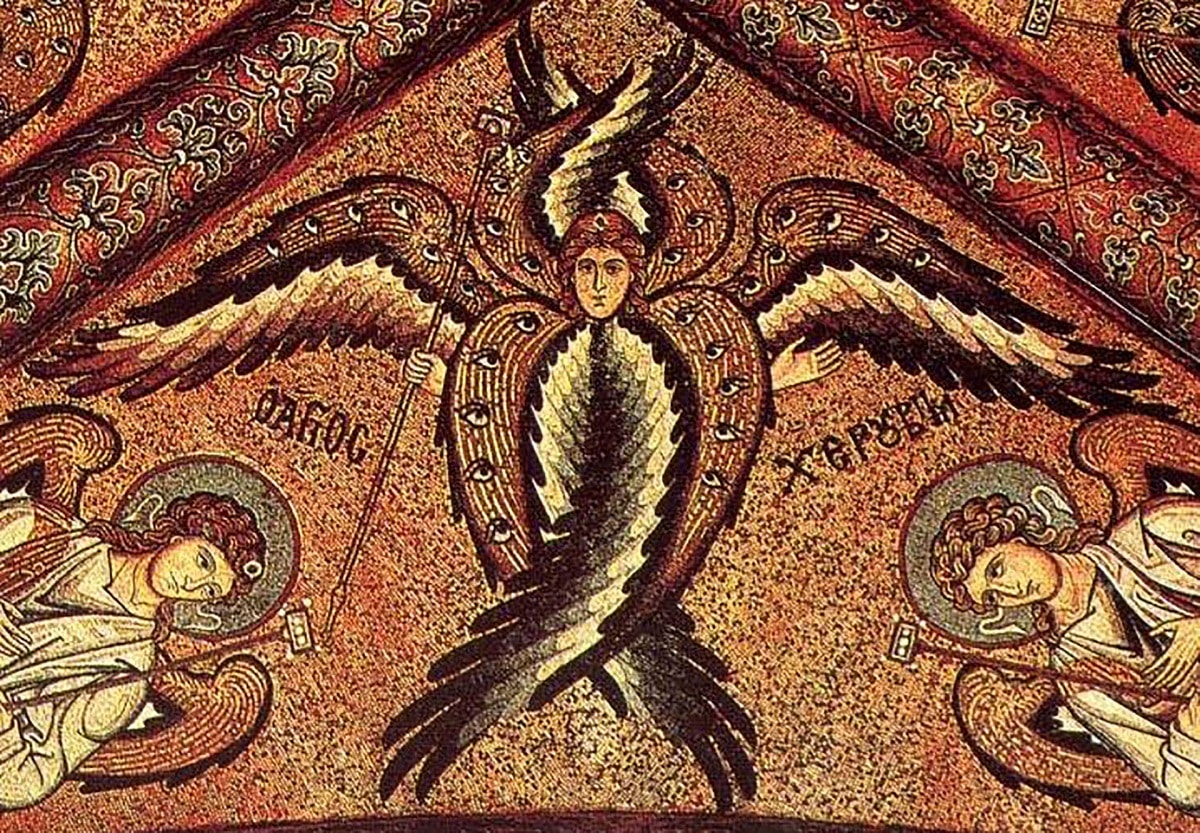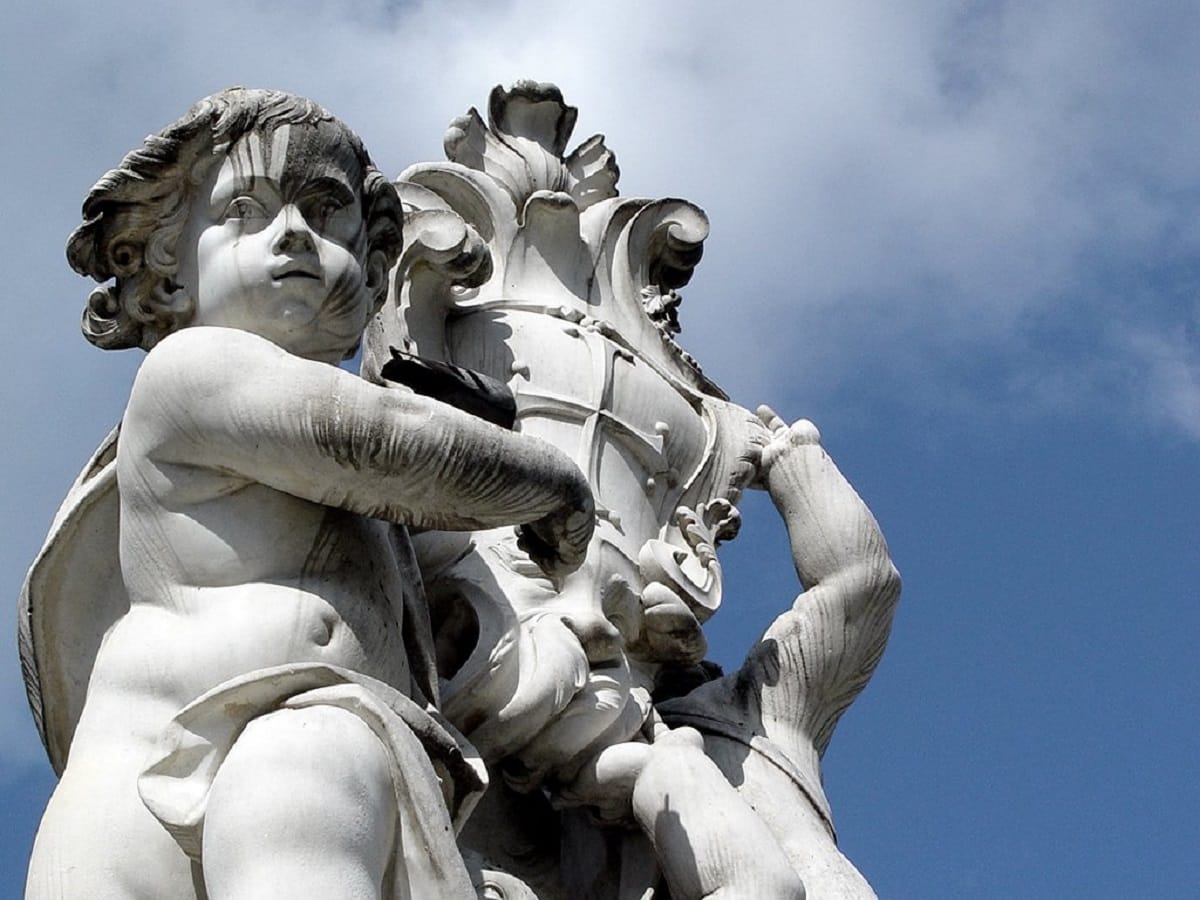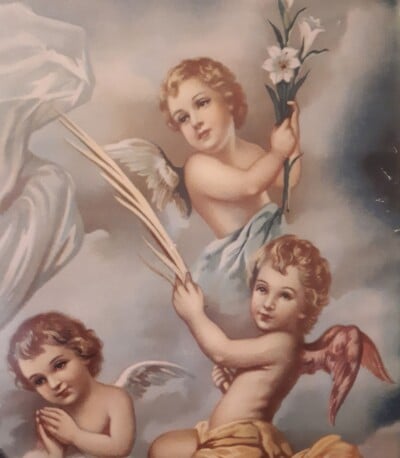
The word cherubim comes from the Latin “cherubim”, and at the same time from the Hebrew, «cherub”. It is a concept used in religion to refer to spiritual entities. Although this term may be new to you, surely at some point you have heard of them. Even in art and jewelry his image is widely used.
So here we are going to explain in more detail about its meaning, origin and other curiosities so that you do not have any doubts.
What are cherubs?

Within the Christian religion, there is variation in what is believed to be the cherubs. Some believe that they are the second level of angels, with a lower position in the angelic hierarchy than the seraphim. Cherubim are guardian angels who protect the glory of God and sit next to him in the Catholic tradition. Originally, this term referred to a baby who was extremely beautiful, especially if he was a boy. Over time, the meaning of the word expanded to refer to a boy with wings
Its meaning from Hebrew can be translated as “bull”. Angels are spiritual beings, not material. Your main job is to help God and follow the orders of Jesus and the Holy Spirit. They enjoy extreme beauty and purity, like that of a baby, because they have a neutral character. As a curiosity, it is said that the cherubs help to move, since they move by means of lightning.
Who can see the cherubim?
In traditional Jewish religion, cherubim are a highly controversial subject. Only people who have been raised to a higher level can see them, according to Catholic beliefs. In Judaism their existence is questioned, although different versions of traditional Judaism mention their existence, few believe in them or venerate them.
Origin of the cherubim

As we have already said, they have their Christian origin, the first time it is mentioned in the Bible is in the Genesis 3:24
"So he drove the man out, and placed cherubim on the east of the garden of Eden, and a flaming sword that turned every way, to guard the way to the tree of life."
In fact, Satan was a cherub, before he revealed himself (Ezekiel 28: 12-15). Where there were many representations of cherubim is in the tabernacle and the temple: Exodus 25:17-22; 26:1, 31; 36:8; 1 Kings 6:23-35; 7:29-36; 8:6-7; 1 Chronicles 28:18; 2 Chronicles 3:7-14; 5:7-8; Hebrews 9:5.
Ezekiel related about the cherubim in his chapters 1 to 10 as "four living creatures". And each of these had the face of a human, a lion, an ox and an eagle. And when it comes to appearance he describes them as similar to man. They consisted of four wings, two used to cover the body and the other remaining to be able to fly. And he describes them as having the shape of a human hand.
In book 4 of the Apocalypse, verses 6 to 9 are described. Its main function is to magnify what represents the holiness and power of God, the visible reminder of it and the presence among the population.. In addition, to be the choirs that sing praises to God.
Relationship with the seraphim
The cherubim are part of the divinities, and are in the hierarchical order below the seraphim.. The cherubim accompany the seraphim in the songs, making the second choirs. Seraphim in the Catholic hierarchical order are the highest position. They are characterized by having an inordinate passion and love for the divine. In their song it is said that they control the vibrations of heaven and love.
Other meanings of cherubs
In colloquialism, the concept of cherub is used to name a very beautiful young man. For example: “the cherub drove the entire store crazy as soon as he entered”
On the other hand, Querubín is the name of an Argentine brand of cleaning products. Powdered soaps, fabric softeners, detergents, bleaches and disinfectants used in laundry use this trade name.
Finally, the Mexican artist Edgar Clement named one of his literary works "Kerubim and Other Tales" (2007)
cherubs in art

The Sistine Chapel is known for its cherub detail, as shown in the image above. There are many other works of art and paintings that show the cherubs as the main figure, for example: Jan van Eyck painted "Angel Singing". Rosso Fiorentino painted "Mary and Child". Hans Memling painted "Last Judgment". François Boucher painted "The Cello of Europe". Raphael Sanzio, known as the most renowned painter of cherubs, made many of these paintings in the Vatican Chapels during his career. Jacopo Amigoni painted "Bacchus and Ariadne" in 1732.
draw a cherub
Next, we give you some little tricks when painting cherubs, if you keep these guidelines in mind they will help you to make the final result the best possible. The first thing to draw is the outline of the cherubs, using geometric shapes: a triangle for the dress and a circle for the head. It is also indicated that hair should appear to hang down, cheeks should be rosy, and the upper part of the cheeks should be clearly defined, i.e. have chubby cheeks.
I hope this information has been useful to you, if you want to know more about divinities you can access this link.